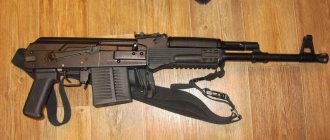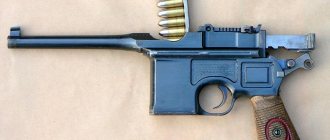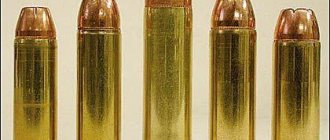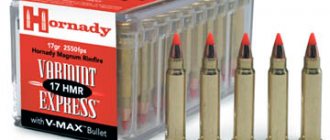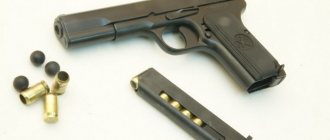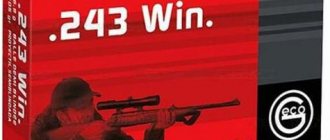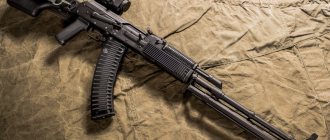Caliber History: .50 Browning Machine Gun
How the John Browning cartridge, which has been in service for a hundred years, was created
The American army could not part with the works of the great designer Browning for a very long time. But still it happened. The BAR left "active service", the M1917 and M1919 machine guns were replaced by more advanced and new models. Even the M1911 pistol, beloved and valued by many, was eventually replaced by Italian products, although in some places this choice was not approved.
However, even the richest army in the world cannot escape the legacy of John Browning. In 2022, the .50 Browning Machine Gun cartridge and the heavy machine gun created for it are still in service.
It is unlikely that anyone involved in its creation could have imagined such longevity. On the contrary, at the time of birth the prospects were not very bright. The “fiftieth” was late for its first war.
During the First World War, both sides of the front thought about the usefulness of weapons with a caliber larger than a standard rifle. The Germans were especially concerned about the issue of fighting the “newfangled” armored monsters of that time - tanks, as well as additional protection of troops from allied aviation.
But even earlier, people on the other side of the front, and especially the English Channel, were puzzled by large calibers. Soon after the war began, German Zeppelins began to convince the British that the Strait and the Royal Navy were no guarantee of security for their island in the new century. Shooting at a huge airship with ordinary bullets fully justified the saying “that pellets are like pellets to an elephant,” and creating effective incendiary bullets in the then standard rifle caliber turned out to be quite difficult.
But the French found “morally obsolete” 11 mm cartridges from the Gra rifle, for which it turned out to be much easier to make such bullets. As a result, the old cartridge received a second youth, becoming an 11 mm Vickers. It is interesting that, according to some reports, Russia also contributed to the success of this cartridge and weapons for it, although not on purpose. Faced with the catastrophic weakness of domestic industry at the beginning of the war, the Russian government placed a mass of orders for weapons abroad. For the volume of the “Russian order”, taking into account the “assigned” by the British allies in favor of a more needy fellow Entente member, amounted to a total of 19 thousand machine guns. However, not all of them were able to be shipped by the summer of 1917, and then the customer experienced “force majeure circumstances,” and, accordingly, the warehouses were overstocked with good machine guns chambered for the now unnecessary Russian cartridge. Having received an order from France for an 11 mm machine gun at the beginning of 1918, without thinking twice, they converted several machine guns of the “Russian order” to a new cartridge and, having made sure that the system worked, began shipping them to the new customer. We can say that in this way the Russian “Maxim”, with the help of the Americans, became one of the world’s first serial heavy machine guns.
However, the American military, and specifically the commander of American forces in France, General Pershing, and Department of Armament officer Parker, did not really like the French cartridge. In their opinion, to successfully solve all problems, including the fight against armored vehicles, the new cartridge had to provide a bullet weighing 43 grams with a speed of about 800 meters per second. In addition, US tests of French ammunition - both the old 11 mm and the experimental 12 mm - showed that rimmed cartridges were not ideal for belt-fed machine guns. However, experiments with various cartridges, with and without rim, continued in the USA in the early 20s, although by this time the winner had already, in general, been decided... thanks to John Browning.
Based on his M1917 heavy machine gun, he designed a sample of a heavy machine gun. Considering that at the same time Browning was developing an automatic rifle (BAR), as well as fine-tuning 7.62 mm machine guns, one can only be surprised at its performance.
However, in 1918 only the first firing from the new machine gun took place. The water-cooled version was put into service in 1921, and the finalization of the version with air-cooled barrel - the same one that became the famous M2 "Ma Deuce" - was delayed even more. The cartridge itself also continued to be refined. The first samples of 1918 had an initial speed of approximately 700 m/s - to put it mildly, less than Pershing wanted. The Great Depression, among other things, halted the development of the .50BMG cartridge. Due to lack of funding, it was possible to reach a speed of more than 800 m/s only in 1937. Further improvement of the powder charge, as well as a reduction in bullet weight from 48.6 to 46 g. made it possible to create a cartridge with an initial speed of 850 m/s.
World War II was the .50BMG's first big battlefield—and its triumph. Large-caliber Brownings shot down Japanese planes over the Pacific Ocean, helped bombers drive away Messrs over Europe and paved the way for infantry, including Soviet ones. The Red Army especially valued Lend-Lease half-track armored personnel carriers with four Brownings, which allowed anti-aircraft gunners to move on par with tanks, and in urban battles to literally sweep away the upper floors of houses along with the “Faustniks” entrenched there.
The military also appreciated the ability of the .50BMG cartridge to fire a long-range and accurate shot. It's funny that here, too, it could not have happened without indirect help, now from the Soviet Union. During the Korean War, American troops captured several PTRDs as trophies. One of them was converted by gunsmith officer William Brophy, using an M2 machine gun barrel, for use as a sniper rifle. According to Brophy, this rifle hit targets at distances of up to 1800 meters. This PTRD is now kept at the NRA National Firearms Museum in Virginia.
Also during the Vietnam War, scoped M2 machine guns were used for single sniper shots. However, for a long time all this was only the initiative of individual enthusiasts, and only in the 80s large-caliber sniper rifles - primarily chambered for .50BMG - began to enter service. Although shooting from a weapon under it is not always pleasant - one of the snipers familiar to the author described shooting from a .50BMG rifle as: “after each shot, the spine is in your underpants” - and today there are more “gentle” versions of cartridges for long-range sniper shooting, . 50BMG in this niche will remain popular and in demand for a long time.
And the finale of the “Ma Deuce” service is also not yet in sight.
Disadvantages of the pistol
One of the biggest problems with shooting the .44 Desert Eagle, and especially the .50 caliber, is the extremely high recoil and bounce of the shot, coupled with the deafening sound. The recoil force of the 50-caliber DE is enormous, but somewhat less than that of large-caliber revolvers using cartridges of similar power, due to the use of automatics and the extension of the recoil impulse over time. If you hold the gun incorrectly, when fired, the spent cartridge will fly straight into the shooter's face. There is no need to talk about the consequences here. In addition, with a weak “grip,” the gun will simply hit the shooter’s head with the barrel. The Desert Eagle is used primarily for sport shooting at long-range silhouette targets and sometimes for short-barreled hunting of medium and even large game, thanks to the spread of revolver hunting in the United States, which has officially existed since the 1930s and is quite popular.
Desert Eagle pistol options
A .44-caliber Desert Eagle pistol with a laser designator in the hands of Michael Harrigan (Danny Glover). Movie "Predator 2" 1990.
The Desert Eagle was the service weapon of agents in the famous Matrix trilogy.
Desert Eagle Specifications
- Caliber: .357 Magnum / .44 Magnum / .50 AE
- Total length: 275 mm
- Barrel length: 152 mm
- Weapon height: 160 mm
- Weapon width: 33 mm
- Weight without cartridges: 1765 / 1895 / 2050 g.
- Drum capacity: 9 / 8 / 7 rounds
Pistols
- Israel
- Spain
- Mexico
- South Korea
- Slovakia
- South Africa
- Montenegro
- Croatia
- Japan
- Norway
- Ukraine
- Vietnam
- USA
- Great Britain
- Finland
- Hungary
- Germany
- Serbia
- Switzerland
- Poland
- France
- Belgium
- Italy
- Austria
- Russia/USSR
- Brazil
- Türkiye
- Argentina
- Canada
- UAE
- Jordan
- China
- Bulgaria
- Slovenia
- Czech
Owner reviews
The owner’s impressions of the reliability of the Desert Eagle: “The main drawback of the DE is its magazines, the thin jaws of which are severely deformed when the magazine falls on a hard surface, after which the cartridge will no longer sit at the desired angle, which leads to inevitable delays in the form of sticking when feeding. The pistol is very sensitive to the quality of cartridges. For example, there were delays when using cartridges with steel cases, while there were no delays with copper cases. Sometimes the bolt-casing is blocked by the bolt stop, regardless of the number of cartridges remaining in the magazine. Also a very unpleasant moment. No matter how hard I tried, no matter how much I trained, still in 50-100 shots, at least one cartridge case would land in the forehead! Once it landed right in the eye, but, according to safety precautions, I was wearing glasses. If you loosen your grip a little, the trajectory of the cartridge case changes sharply, towards the shooter’s face. The cheeks of the handle seem to be made of very cheap plastic, and hard at that. If your hand is wet or oily, it will slip a lot. And with such a return, it is not very pleasant and quite fraught. Therefore, plastic cheeks must be immediately replaced with rubber ones. To summarize, the main disadvantage of the pistol is its low reliability. Not a single trip with him to the shooting range was complete without at least one delay for one reason or another.”
Popularity in games and movies
The Desert Eagle is very popular in movies and computer games. DE has been seen very often in various action and fantasy films since the mid-1980s. Since 1984 and Year of the Dragon, films in which Desert Eagle has starred have included the Robot Cop trilogy, Predator 2, Eraser, Commando, Alien vs. Predator, Underworld, Resident Evil: Apocalypse, and a huge number of lesser known ones. In particular, the Desert Eagle was the service weapon of agents in the famous Matrix trilogy. This popularity is a result of the large size, striking design and large caliber of this "Hand Cannon". Thanks to the same qualities, Desert Eagle is also popular in the computer gaming industry. It is present in such hits as Counter Strike, Resident Evil, Tomb Raider, Soldier of Fortune, Metal Gear Solid 4: Guns of the Patriots, Jagged Alliance 2, Far Cry, STALKER, Grand Theft Auto: San Andreas, Call of Duty 4 : Modern Warfare, Xenus, Hitman, Fallout and many other games that use firearms. Let me clarify once again regarding the use of DE as a combat weapon for special forces - this is a myth and nothing more. The DE was and remains a very original sporting and weekend shooting pistol.
Desert Eagle pistol chambered for .50 AE
Desert Eagle pistol chambered for .50 AE
One of the currently produced .50 caliber Desert Eagles
